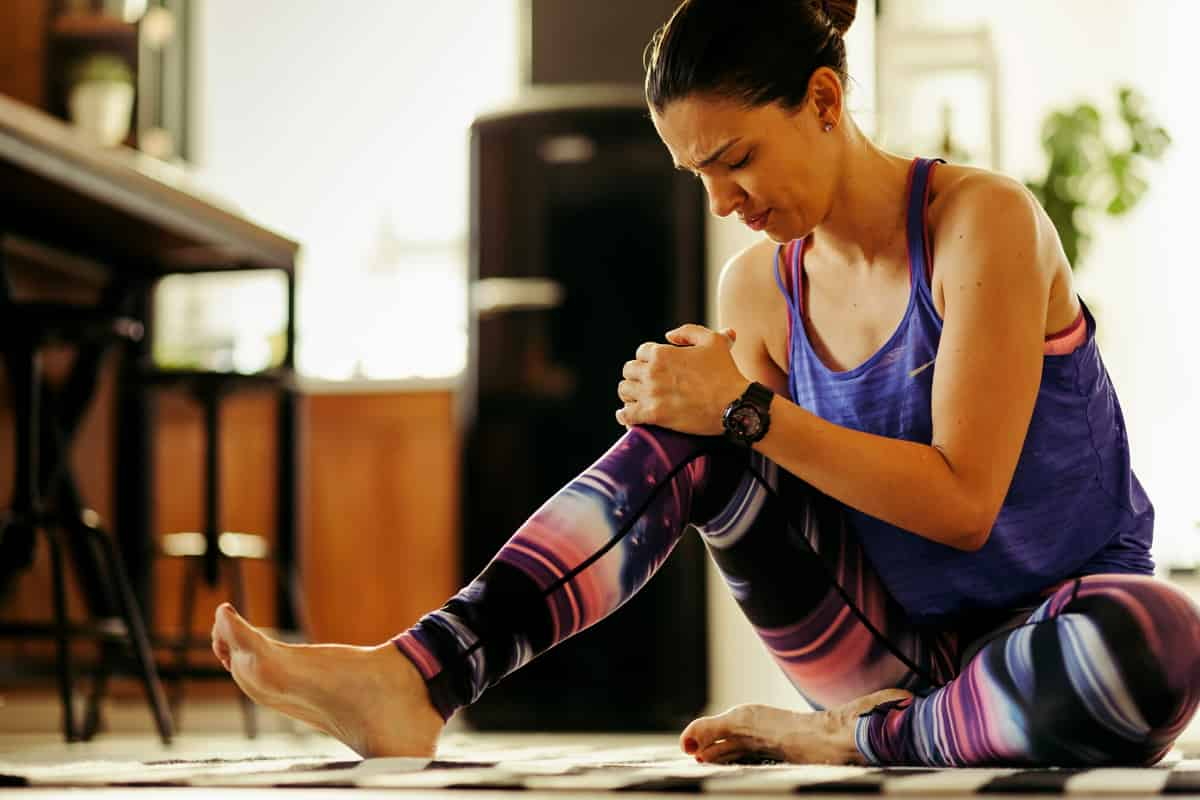Best Exercises for Knee Pain

When women in midlife begin to experience joint pain, they usually assume it is the inevitable result of aging and their joints “wearing down.” However, knee pain can be influenced by a number of factors, including increased sensitivity due to the hormonal changes in menopause.
Common Causes of Age-Related Knee Pain
Patellofemoral Pain
Knee pain around and/or behind the kneecap is called patellofemoral pain. When people begin a strength training, walking, or running program – or quickly ramp up the volume or intensity of something they are already doing – the tissues around the knee and kneecap may not have had sufficient time to adapt.
This means that everyone from professional athletes to those brand new to exercise may experience patellofemoral pain at some point.
Knee Osteoarthritis
Osteoarthritis (OA) is much more than “wear and tear” causing joint pain. It’s a complex inflammatory process influenced by previous joint injury, obesity, and genetics as well as aging. While everyone’s joints age to some degree, not everyone has joint pain from OA.
Knee pain from OA usually causes stiffness first thing in the morning or after prolonged sitting, as well as pain during weight-bearing activities.
Why Exercise Helps
Our joints are made up of living tissues that respond to stress over time by getting stronger. Knee tissues aren’t like car parts that wear down and have to get replaced. Years of research have shown that the bone, cartilage, and joint surfaces of the knee can actually get healthier from exercise!
Impact Activity
Most people are surprised to learn that recreational running does not increase your risk of developing knee OA. It may actually reduce your risk of developing it!
The forces on your knee when your foot hits the ground cause your body to repair and strengthen those tissues while you rest.
Strength Training
If we don’t act, we lose muscle mass with age in a process called age-related sarcopenia. However, regular strength training can slow or stop this process.
Movements such as squats bend the knee to keep it flexible and lubricated through its full range of motion.
Best Exercises for Knee Pain
Adding Exercise
If you don’t regularly exercise, the best approach for treatment and prevention of knee pain is to add movement.
Like medication, exercise is only as good as its dosage. Instead of making major changes in a short period of time, add activity slowly and steadily while including rest days. Mild knee discomfort that resolves within a day can be normal as you increase exercise.
Significant discomfort that lasts for more than a day after exercise is a sign that you’re doing too much too soon. Instead of stopping exercise altogether, try returning to your program at a lower, more tolerable range before slowly working back up.
Strength Training
Squats and lunges are perfect exercises for building strength and reducing pain around the knee. The best results from strength training come from practicing 2-3 times per week with one rest day between each session.
Perform 2-3 sets with a 2-3 minute rest period in between each. Each set should have between 6-20 repetitions. Use enough resistance so you reach the point where you could only do the movement two or three more times.
Here’s an example of how to approach adding squats to your exercise program:
- Try to perform a squat to full depth (about 90 degrees of knee bend). If you need help with balance, you can hold onto a countertop or sit back on a sturdy chair or couch.
- If you can do the full range of motion without assistance, try adding weight! If you have significant pain, reduce the range of motion until you find a tolerable stopping point. Over time as you practice squats, you should be able to work up to full depth!
- Once you begin to add weight, work at a level with minimal or no knee pain. You will get more comfortable with practice as your knee adapts to the exercise.
Walkers, hikers, and runners often also benefit from adding lower body strength training to build strength and muscle mass.
When it comes to knee OA, both low and high-intensity strength exercises have been shown to be safe and helpful for reducing knee pain. However, the study showed that exercise with a higher weight was better for building strength.
Load Management
If your knee pain is related to changes in your exercise program, the simplest treatment strategy is to adjust the amount or intensity of exercise in question. We call this approach load management. These are temporary changes in exercise – knee pain should almost never require you to give up what you love!
A physical therapist can create a personalized plan and instruct you on how to do strength training safely. If your knee pain persists despite a course of physical therapy, consider consulting an orthopedic specialist.
Sign up for more unique women’s health content
By submitting this form, you agree to the Lisa Health Privacy Policy and Terms of Use


